#tea caddy
Text

Tea canister, 1760, England.
37 notes
·
View notes
Text

Hexagonal Tea Box with Fucus (Algae) Decoration. Designed by Lucien Bonvallet and made between 1902 and 1911 in Paris, France. Medium is embossed solid silver coated with an iridescent black finish. Musée d'Orsay inventory number: OAO 1882.
(Source: musee-orsay.fr)
#tea caddy#bottles#decorative arts#Lucien Bonvallet#early 1900s#art nouveau#french design#metal#silver#black#b&w#iridescent
3K notes
·
View notes
Text



A beautiful mahogany single tea caddy, dating back to c.1840, inlaid with a boxwood ship to the top of the lid. Made by a Lighthouse keeper
94 notes
·
View notes
Text

Wooden tea caddy with lock and key, 1780-1800
From the Victoria & Albert Museum
139 notes
·
View notes
Photo

Mermerizing and delicate field of hagi (clover) made from raden (mother of pearl inlay) for this box (probably a natsume/tea box used for tea ceremony) crafted by Nomura Takuya.
You can also watch here a video unveiling the glittery makie (gold dust lacquer) inside. That must look so pretty when filled with bright green matcha powder!
#japan#art#craft#raden#mother of pearl inlay#hagi#clover#makie#gold dust lacquer#natsume#tea caddy#matcha#tea ceremony#chado
318 notes
·
View notes
Text
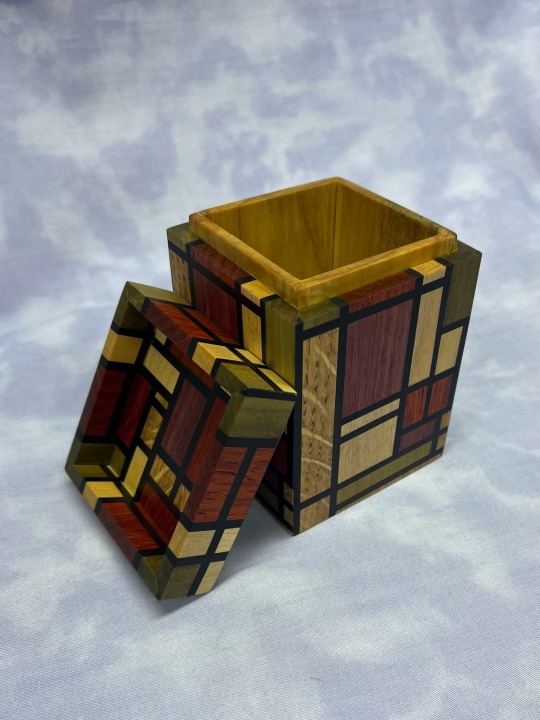
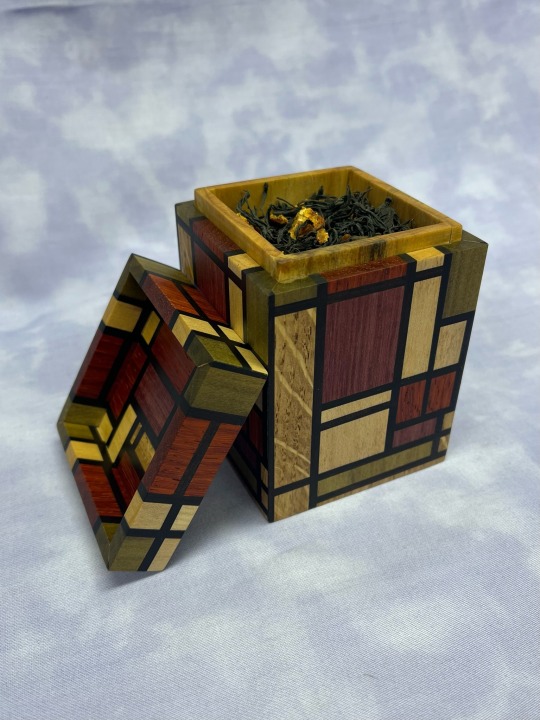

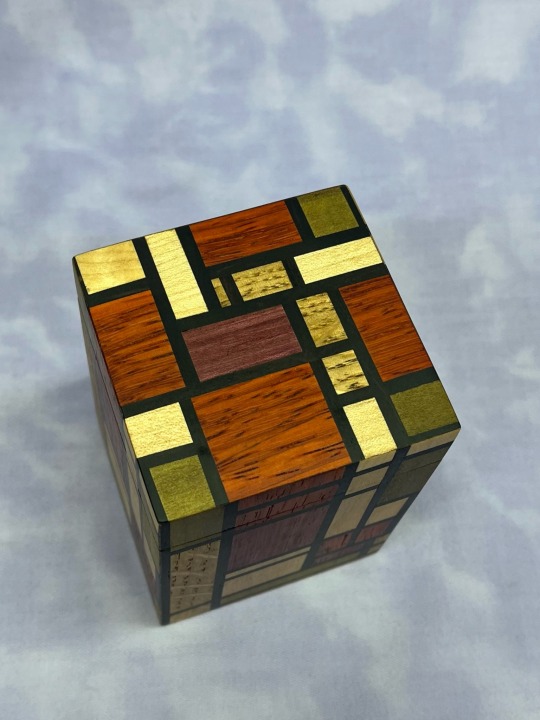



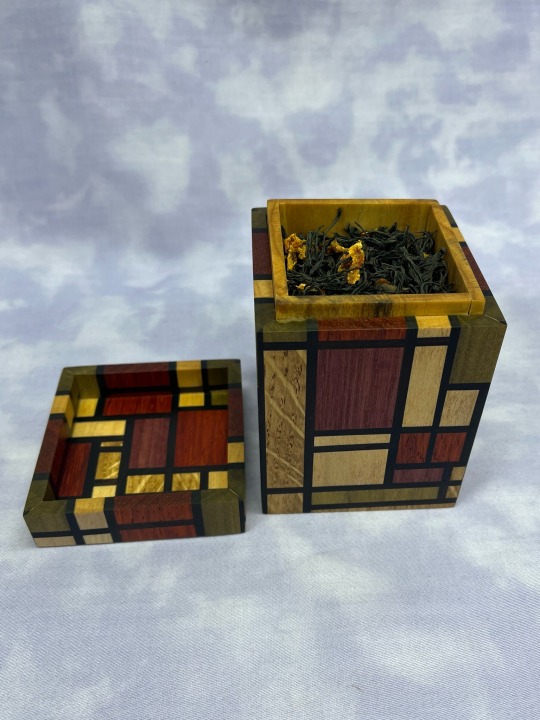
Mondrian inspired tea caddy.
This was my first attempt at making a box and I always need more space to store tea. I liked the straight lines when I’ve stuck waste wood together before for other projects which lends itself quite well to a Mondrian style pattern.
I didn’t have any naturally red, yellow, or blue wood so I used orange (padauk), green (tulip), and purple (purple heart). I also used sycamore to replace the white and oak for the grey, with African Blackwood for the black lines. I used mitre joints for the corners and lined the box with cedar.
I finished the box with Danish oil, which says it’s odourless when it’s dry but it’s been dry for over 2 weeks now and I can still smell it
50 notes
·
View notes
Text
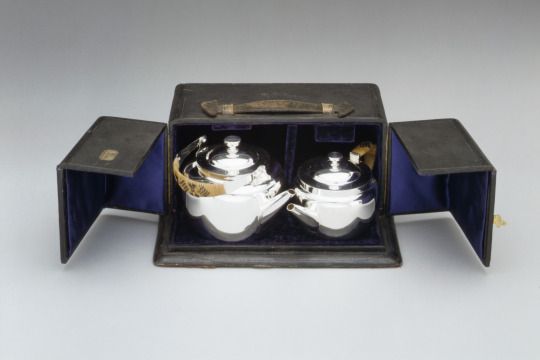

---
Designer/Brand: Christopher Dresser [X]
Region: London, England
Time period: 1879
#tea#tea set#teapot#teacup#sugar bowl#cream pitcher#spirit lamp#tea caddy#Christopher Dresser#1870s#1880s#queueteas
14 notes
·
View notes
Text

Japanese Tea Container
handmade ceramic & wood
13 notes
·
View notes
Text

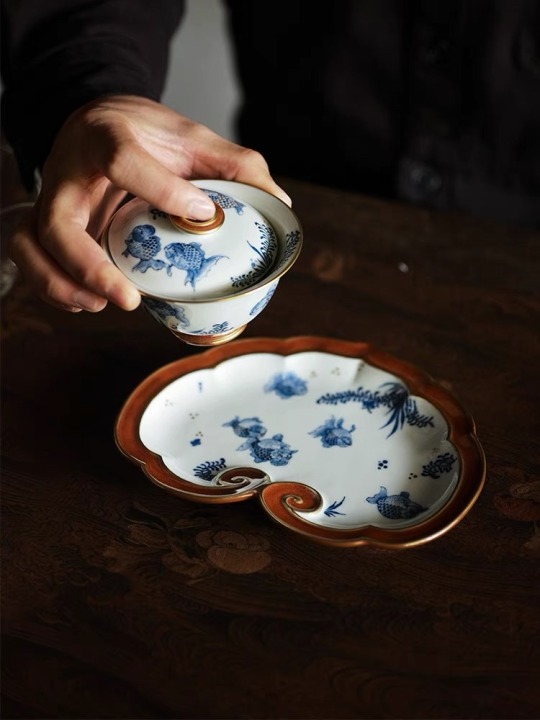

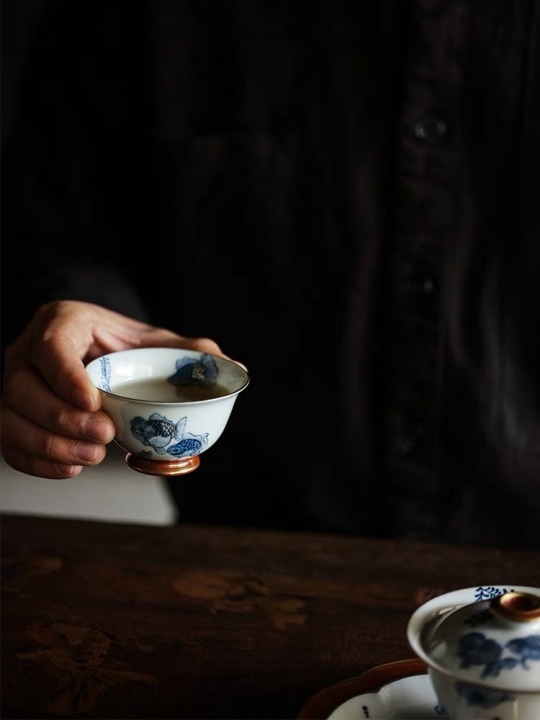
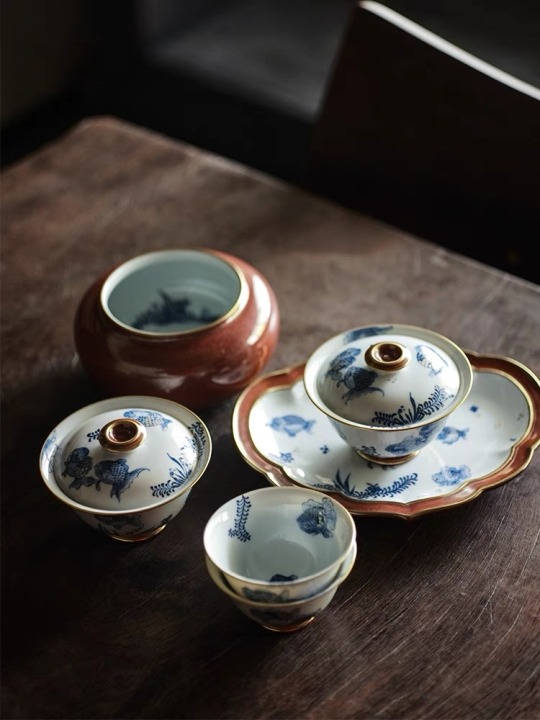
Which is a good way to loosen up a group who are still on their first cup of tea.
#tea bowl#tea caddy#vintage style#vintage teacup#gaiwan#teatray#potterypots#morimatea#teacup#chaxi#tea#teaceremony#teatime#beautiful#innerpeace#blacktea#tea cozy#sweet tea#lovetea#sharetea#tea lover#handicraftshop
7 notes
·
View notes
Text



RARE "HARLEQUIN" TEA CADDY
English George III Period Rectangular Tea Caddy, early 19th c., surface inlaid with green tortoiseshell and mother-of-pearl diamonds in a checkered design, with silver lid cartouche and escutcheon (with key), interior with single lidded compartment containing traces of foil lining.
Thomaston Place
47 notes
·
View notes
Text
木製茶筒の試作

茶筒には様々な材質の物があるが、ブリキ缶の物が最も一般的である。高い遮光性や密閉度が茶葉を湿気や酸化から守ることに加え、軽量で充分な強度があることや、製造コストが比較的リーズナブルであることもその理由だろう。
ギフトセットなどでは写真のような様々な図柄の茶筒があるが、いざ茶筒だけ欲しいとホームセンターなどで探しても1種類置いていればいいほうで、とても選ぶような品揃えはない。インターネット通販で探せばいろいろあるけど、嵩があるから送料で結構な値段になっちゃうよね。以前ワークエクスチェンジで当地に滞在した人は、ここで作った自家製茶を保管するのに、同じデザインの安価な茶筒を入手し、違う絵柄の和紙をその表面に巻き付けて種類分けしていた。外観も綺麗にアレンジされて良いアイデアだと思うね。
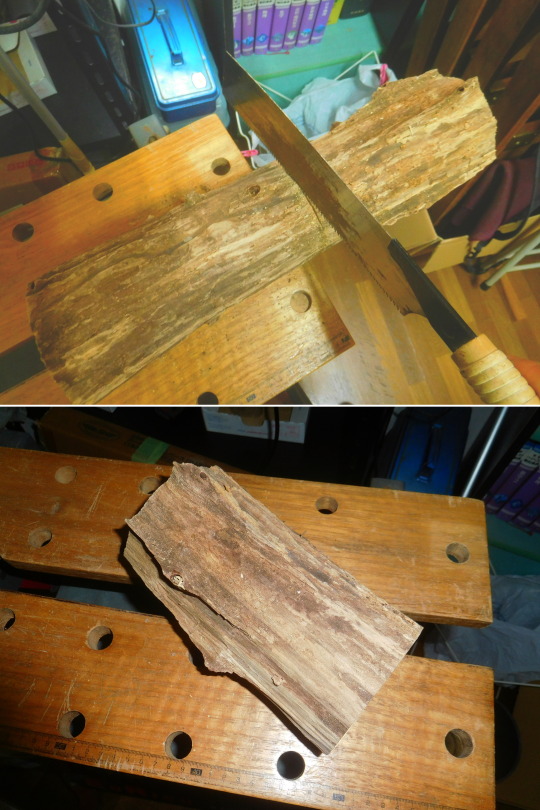
ちなみに毎年春に大量に製茶する自分は、茶葉を大きなタッパーに入れて冷蔵庫で保管しているので、現状では茶筒を必要としているわけではない。にもかかわらず木製の茶筒を作ってみることになったのは、
・倒木材の活用研究
・所持工具や設備の加工能力の検証
・加工プロセスの研究
・当地滞在者へ木工アイデア提供
といった理由からだ。
薪狩りに出た際にいろいろ物色したが、程良い太さのヒノキ倒木を見つけ、硬さもこれぐらいが丁度良いんじゃないかと考え、一部を切り出して工作室に運び込んだ。さらにそこからクラックや節穴などが極力少ない部分を選んで必要充分な長さを切り出した。

デコボコした表面に鉋がけをして大まかに円筒を作っていく。この時点でヒノキ独特の木目と芳香が醸し出される。両端の切断部も側面部に垂直になるよう削って調整していく。

この円筒を本体と蓋になる部分に分割切断し、印籠構造で接合出来るようにそれぞれの端部を加工していく。先ずは蓋側を一定径および深さになるよう掘り込んでいくのだが、これにはボール盤を使う。汎用ドリルビットで出来るだけ密に開孔した後、ボアビットに変えて粗仕上げしていく。この方法をとるのは、以前別の製作をした時に、ボアビットだけで切削していったら負荷が大きく、時間も多く掛かり非効率だった経験から。

本体側の端部もノミとヤスリで削りながら、蓋部と絶妙な「はめあい」になるよう調整していく。さらに蓋を填めた状態で本体との間に段差がないよう鉋で側面を削って調整する。

印籠構造が確立できたら、本体の内部をくり貫いていく。方法は蓋部と同じだが、深くて一度の切削では奥まで届かないのでボール盤の作業テーブル高さを変更し、二段階のプロセスで掘っていく。
さらにその後、ひっくり返して底部を切削する。こちらは筒の安定立ちが目的なので、周囲に脚部となる土手を残し中央を数ミリだけ掘り下げる。

ヤスリを使い、ガタなく立つよう底面脚部を摺って調整し、蓋の頭頂部も滑らかに丸みを帯びるよう削ったら、最後に外側をラッカースプレーでコーティングして完成。本当は外側だけでもじっくりサンドペーパーなどかけて磨き上げてやれば、表面の傷も凹凸も無くなり木目もより鮮明に浮き出て格段に綺麗に仕上がるが、いかんせん忙しく時間も無い中突貫で作ったから恐ろしく荒さが目立つが、今回は試作と言うことで(言い訳)。

木製の茶筒も茶葉保管性は良好とされるが、今回使用したヒノキのような材料は良くも悪くも独特の芳香を持っている。それらが茶葉に移っても全く気にしないとかむしろ歓迎だと言う場合は直接入れて保存しても良いと思うが、そうでない場合は写真のようにポリ袋に入れた物を茶筒にしまえば問題ないだろう。ちなみに今回試作した物は自家製茶50g強を入れる事が出来た。挽いたものならその何倍も入るけど、逆にそれ用にするならもっと小さく作ってもいいよね。粉末はより酸化して風味が劣化しやすいから茶筒にしまうメリットも大きいかも知れない。
#田舎#田舎暮らし#里山#自給自足#移住#倒木#木材#木工#工作#工芸#道具#茶筒#自家製茶#保存#デザイン#クラフト#diy#countryside#rural life#self sufficiency#tree#wood#woodworking#tool#wooden case#tea caddy#self made#preserve#craft
5 notes
·
View notes
Text

Tea canister by Meissen Porcelain Factory, 1733, Germany.
87 notes
·
View notes
Text
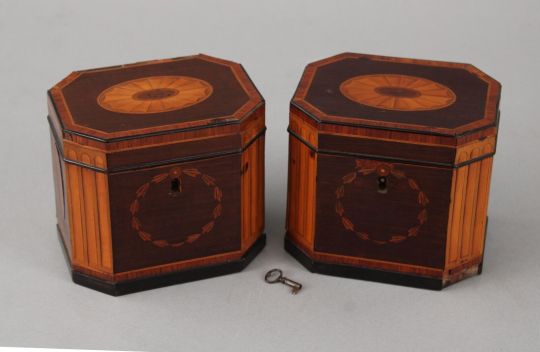
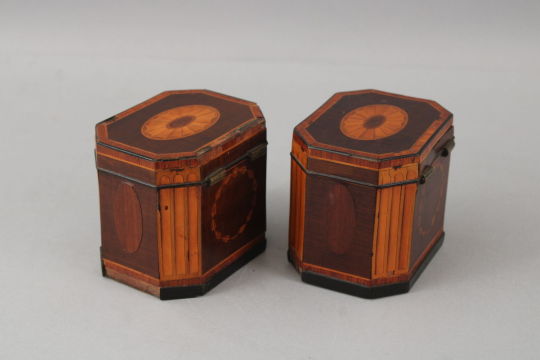

Pair Antique 18thC George III Miniature Inlaid Tea Caddies Caddy NO RESERVE ebay WWolst12Store
2 notes
·
View notes
Text

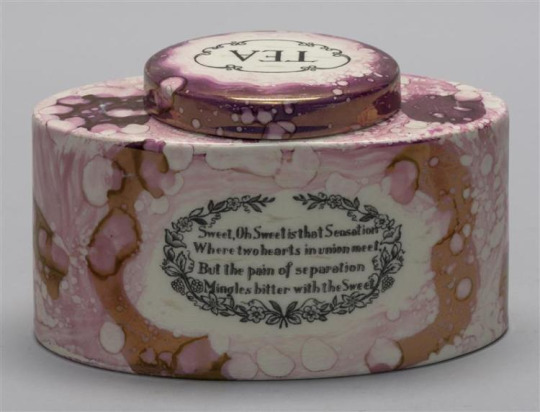
Porcelain Tea Caddy, 19th century
With transfer decoration of a compass rose, ships, and verse.
97 notes
·
View notes
Text
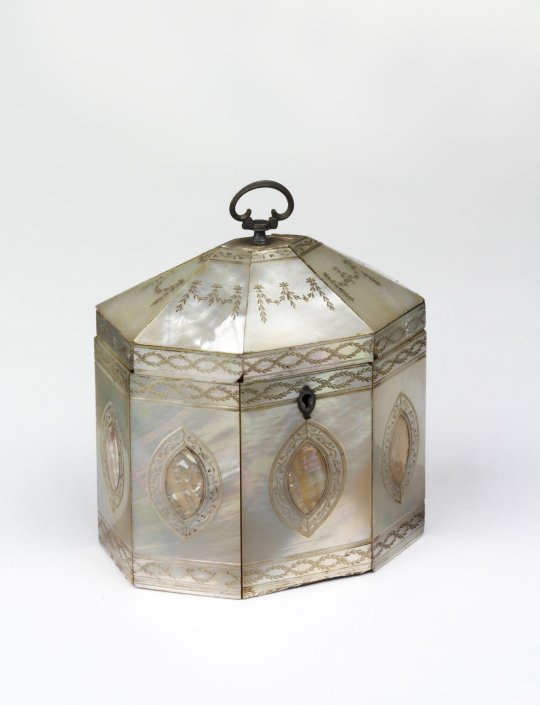
Mother of pearl tea caddy, 1780-1800
From the Victoria and Albert Museum
23 notes
·
View notes
Text
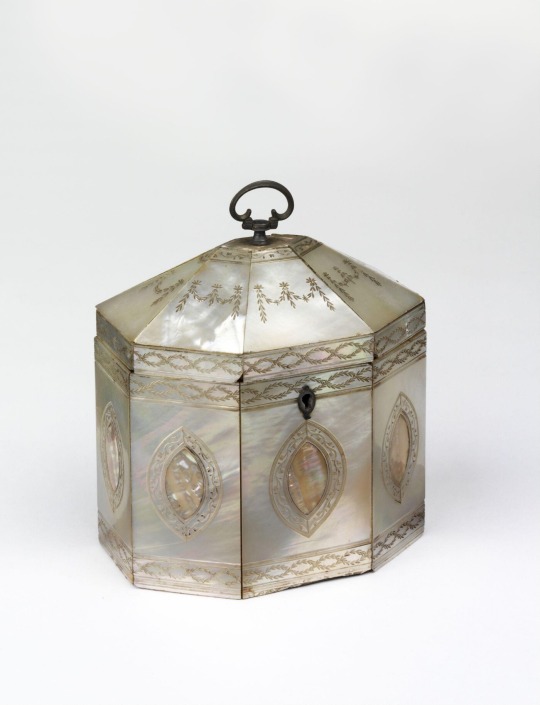
Octagonal tea caddy veneered with mother of pearl with incised decoration and metal fittings, 1780-1800
21 notes
·
View notes